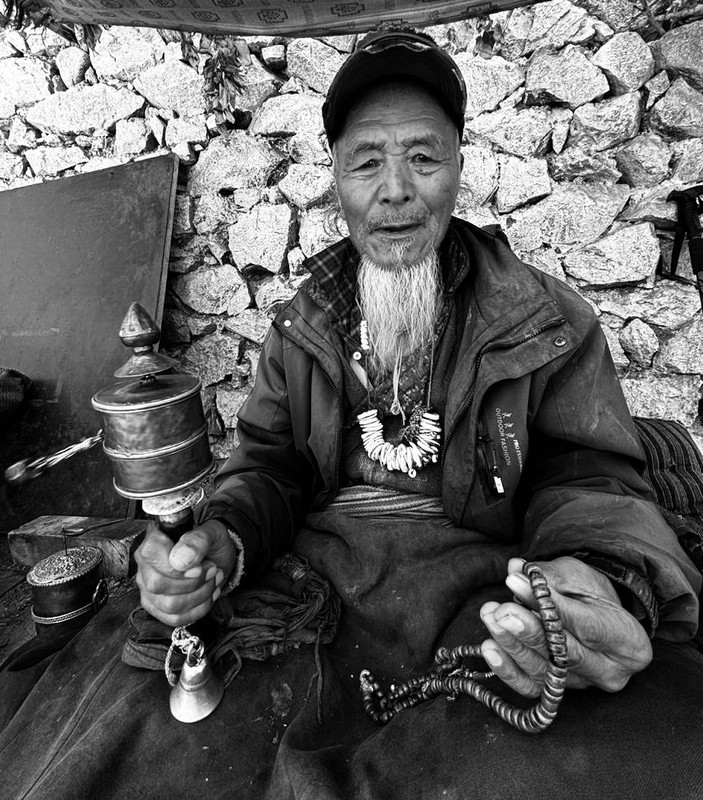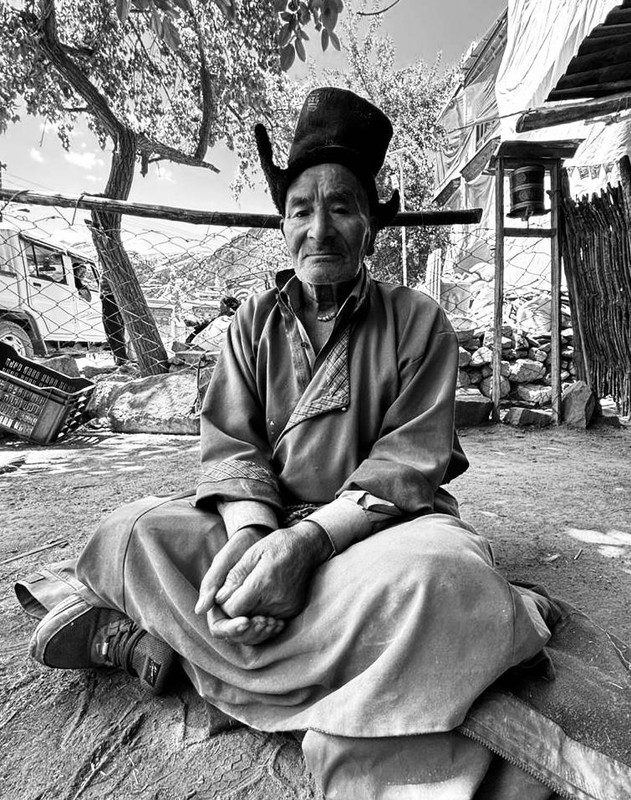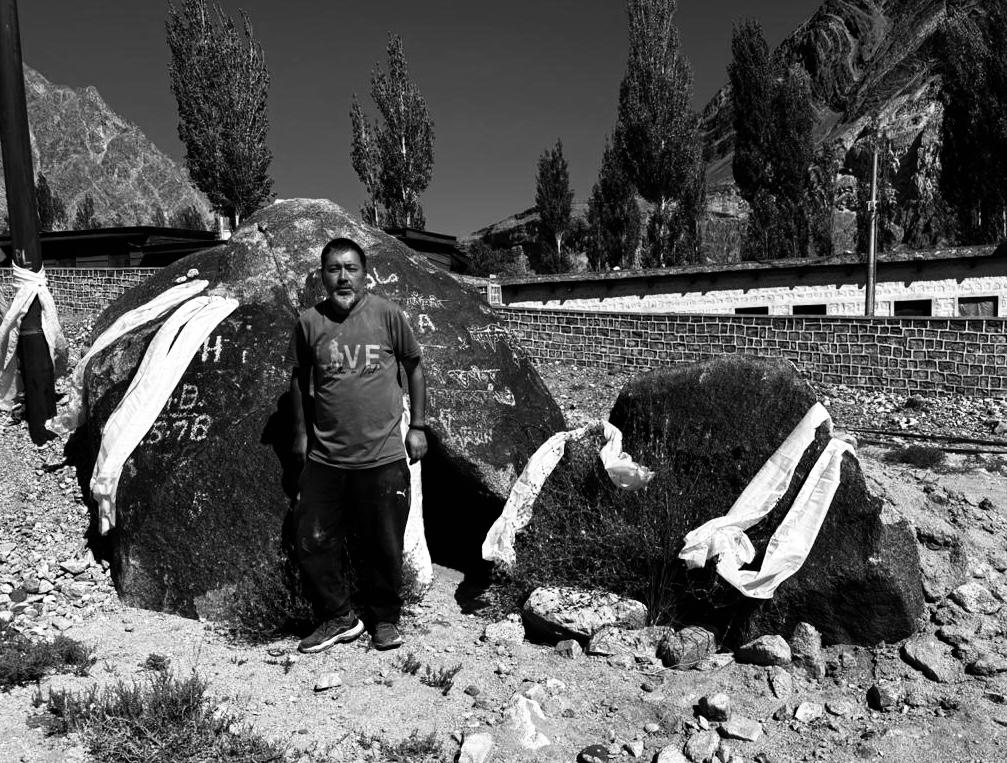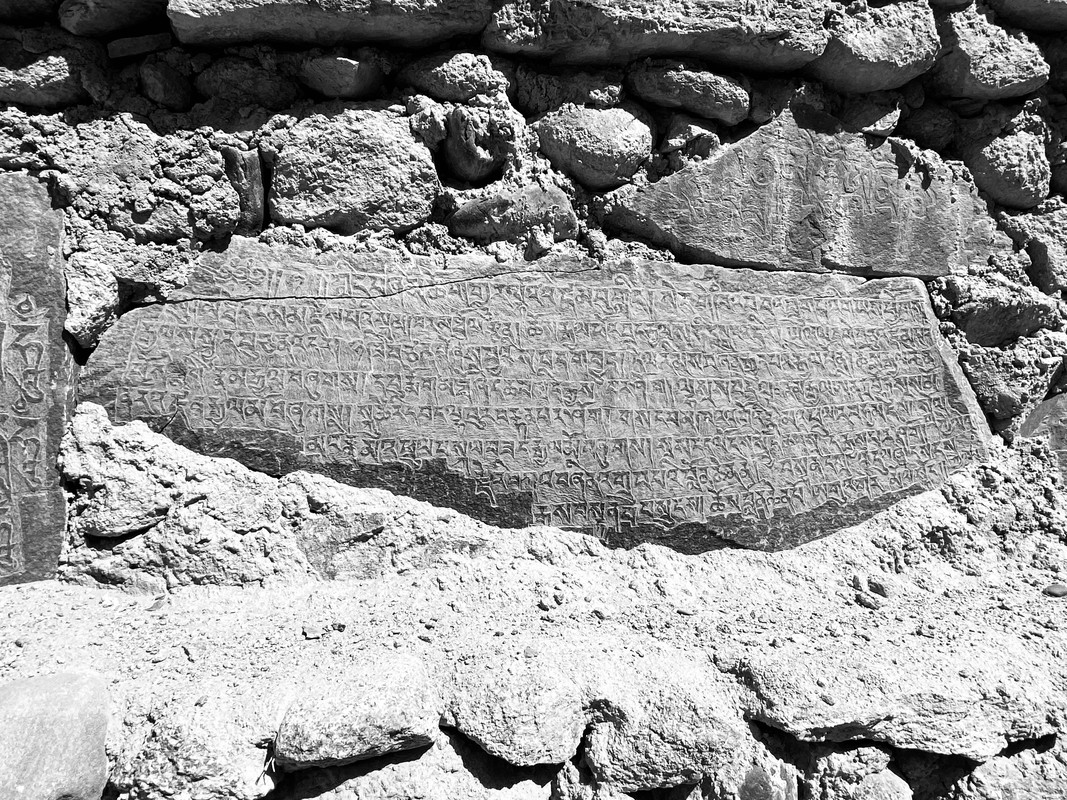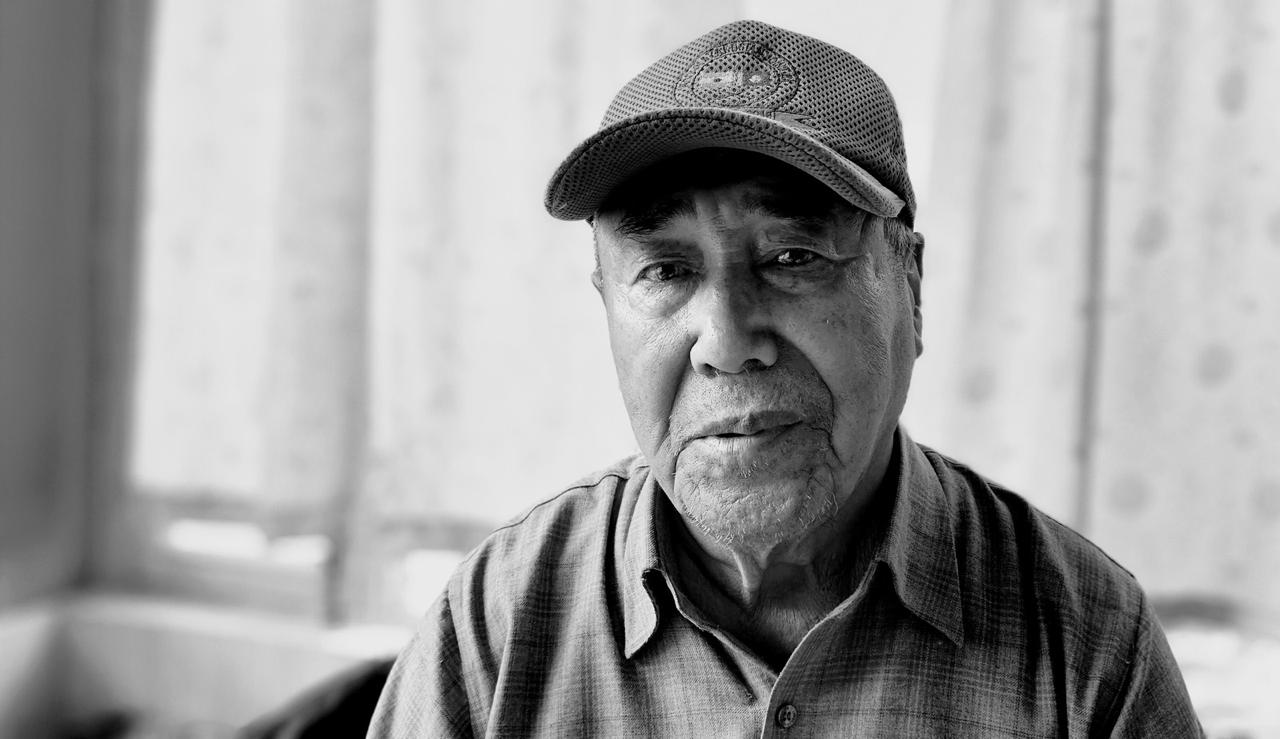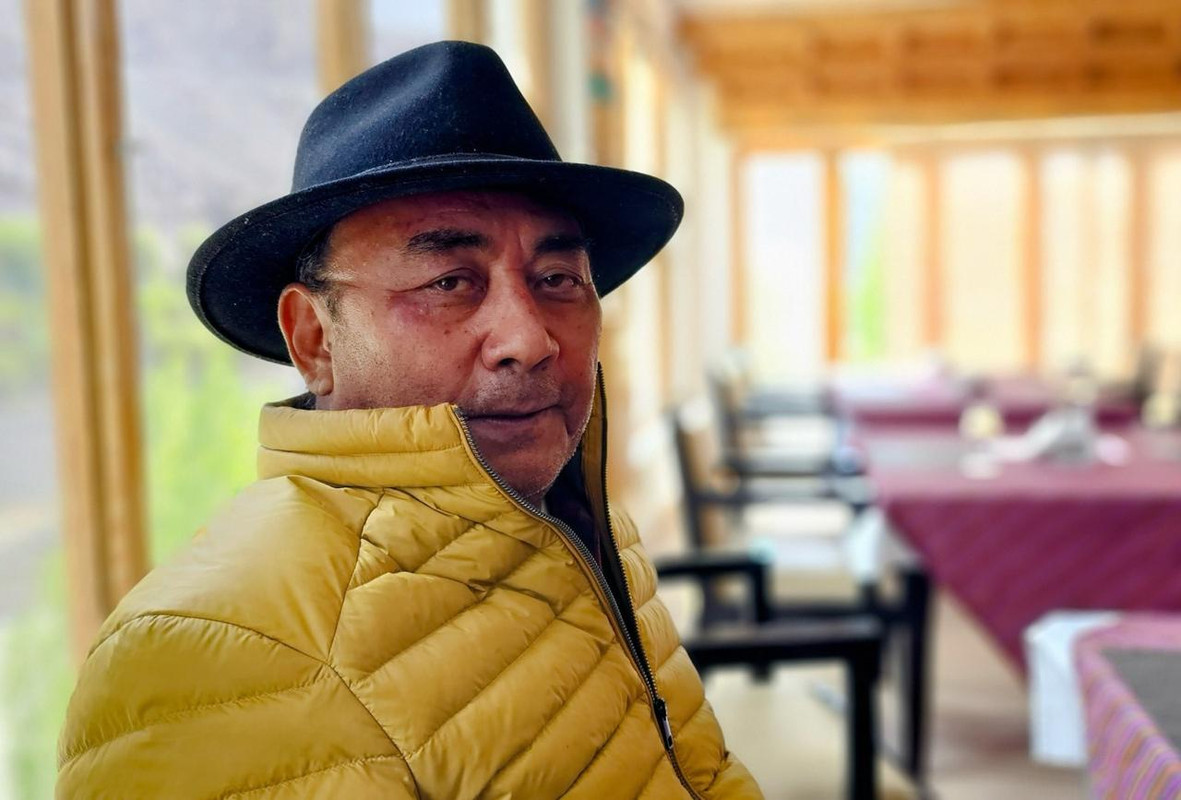Dorjey Sonam, 85, of the Kunga Stampelpa family in Skurbuchan village, Ladakh, India, recalls making numerous trips to the salt markets in Chemrey and Sakti villages during his youth. He carried nas (barley) and chuli (dried apricots) from Sham to trade for salt brought by Tibetan traders, whom he remembers coming from the Gerge region of Tibet. This was before the 1962 war with China. The journey was long and arduous, taking seven days on donkeys to reach Sakti from Skurbuchan—five days to Leh and an additional two days from Leh to Sakti. Dorjey vividly recalls the bustling salt markets filled with Tibetan traders and the fields of Sakti and Chemrey alive with thousands of raluk (goats and sheep) grazing across the landscape.
The market was held twice a year: once during spring, known as Spid Tsongs, and again in autumn-Ston Tsongs. The exchange rate at the market fluctuated, with the Tibetans often demanding two to three times the amount of nas in exchange for a given quantity of salt. The Tibetans measured salt using a container called a batti (equivalent to two kilograms), but Dorjey and other traders from Skurbuchan brought their own nyaga (a single-pan traditional balance) along with weights measuring one pao (250 grams), two pao, one kilogram, and eight pao. They typically spent two days at the market, purchasing salt from the Tibetans. While Dorjey only bought salt for personal use, some elders from his village ventured on longer journeys to Baltistan after returning to Skurbuchan. In Baltistan, they traded salt for apricots and butter. The Baltis, in turn, visited Skurbuchan and set up camp at a site in the village called Miyaskor. They brought stone utensils, known as doltoks, which they sold in Skurbuchan and neighbouring villages. These doltoks were transported on wooden frames called Kis-Kis.
Besides the Sakti-Chemrey salt market, Dorjey Sonam also traveled on foot as far as Lamayuru village and Sonamarg. While his visits to Sonamarg in Kashmir were to buy his annual supply of goods, he visited Lamayuru to pay the heavy government tax in the form of nas. In Sonamarg, he would buy das (rice), toe (wheat), and peas. He recalls that, in those days, Rs 1 could buy 12 kg of peas, 7 kg of wheat, and Rs 2 would buy 1 kg of rice. Dorjey vividly remembers the extremely high government tax and describes those times as very difficult for the people of Ladakh. He would carry up to 35 kg of nas all the way to Lamayuru to pay his dues. A government official collected the barley at a government kutti, and often these interactions were bitter, as local officials frequently rejected the quality of the barley on trivial pretexts. Dorjey Sonam remembers the past life in Ladakh as both challenging and simple. Sadly, all of Dorjey’s companions who once traveled with him to the Sakti-Chemrey salt markets have since passed away.
Tsering Nurbu, 84, of the Tangkarpa family in Skurbuchan, endured many hardships during his early years. As a young man he took up any work he could find. He remembers that he would receive three Khal (one Khal is approximately 50-kilogram) of nas, for a whole year's work at a family’s household. He once accompanied traders from Skurbuchan on a journey to the Sakti salt market, where he helped care for their donkeys. On the return trip from Sakti, the traders stopped near Skampari, close to Leh, for rest and recreation. While the traders enjoyed well-deserved sessions of chang (local wine), Tsering was left in charge of the salt-laden donkeys. To make matters worse, the intoxicated traders began quarrelling with him, falsely accusing him of having swapped their donkeys.
In his mid 20s, after working as a helper for several years, Tsering received advice from his father to leave his job and start a business to improve his circumstances. With Rs. 60 that Tsering had saved and an additional Rs. 30 contributed by his father, they decided to travel to Srinagar to purchase goods for trade. One of their main concerns during the journey was their inability to count numbers in Hindi and Urdu, which they feared would create difficulties in transactions. In those days, the journey to Srinagar was made entirely on foot. Without donkeys to assist them, the father and son opted to carry the return load on their backs. To prepare for the demanding task, Tsering’s father decided to train the young and inexperienced Tsering in the use of a Kis-Kis—a traditional load-carrying wooden frame commonly used by long-distance travelers in Ladakh.
The Kis-Kis, worn on the back, was specifically designed to transport heavy loads over long distances. It was used alongside a long stick, which served as both a walking aid and a load-supporting tool. When the carrier grew tired, the stick was skillfully positioned under the load, allowing the person to rest while standing upright, with the stick bearing the weight. After a few days of training, they started their journey to Kashmir. On the way, there was always the fear of being waylaid by robbers known as Chakpas. To stay safe, Tsering and his father would take precautions by finishing all cooking activities, especially the mandatory Ladakhi chai, before sunset. Immediately after, they would find a good place to hide—either above or below the road, but never on the roadside. There, they would sleep in silence until sunrise, when they would resume their journey.
During their first visit to Srinagar, Tsering and his father came across a shop offering teacups at an incredible discount: Rs. 1 for a set of 70 cups. Seizing the opportunity, Tsering purchased two sets for Rs. 2. Along with the teacups, they also bought daily-use items such as utensils, chai, matchboxes, and dye colors. The arduous journey to and from Srinagar on foot took 27 days. On the 28th day, Tsering went around Skurbuchan bartering his stock of items from Kashmir. He exchanged each teacup for one Aaloo pari (an empty tin can of potatoes) filled with barley, earning a handsome profit.
With the few cups remaining, he traveled to Khalste and sold them all. For the first time in his life, Tsering felt happy and confident, realizing the potential of his entrepreneurial skills. His success earned him increased attention and respect from the community. Tsering’s father, seeing the rewards of this venture, remarked that had Tsering continued as a helper—a Kharpon or Rarzee—their circumstances would never have improved. He encouraged Tsering to keep visiting Kashmir. Over the years, Tsering undertook seven more trips to Kashmir, steadily growing his fortunes with each journey.
Tsering continued his business ventures and once carried two sacks of rice, each weighing 23 kilograms, on his back across the Zojila Pass in his Kis-Kis. He hoped the rice would help his mother overcome a long-standing challenge she had faced throughout her life. At the time, Tsering’s mother sourced the family’s wool by cleaning raw wool that women from the village would leave at their home. For each batch of wool she cleaned, she kept half and returned the other half to the owner. Although this work was physically exhausting, it was essential for meeting the family's need for wool. That year, Tsering made a trip to the Sakti-Chemrey salt market, bringing with him the two sacks of rice he had bought in Kashmir. According to Tsering, this was few years before the 1962 war. At the market, the Tibetans also sold wool alongside salt, and Tsering managed to exchange nearly equal amounts of wool for the rice. This successful trade marked a significant turning point: Tsering’s mother was able to stop working for others and began processing her own wool.
The concept of Phaspun is an important part of the social structure among Buddhists in Ladakh. A loose definition of Phaspun could be a group of people connected through a shared protective deity called "phas-lha." In Skurbuchan, there is a group of families that identify with a Phaspun known as the Gyashingpas, with their protective deity referred to as Tashi Nyenbo
According to Tsering Dolma, a member of the Gyashingpa Phaspun, centuries ago, a princess named Onjor from across the Karakoram range was married to a king in the region. Tsering Dolma’s ancestors came as Nyopas (assistants) to the princess, and since then, they have settled in Skurbuchan. Within the Gyashingpas, there is another unique group of 5 to 6 families known as the Jingba Ringmos (Long Neck), who have a traditional role during social ceremonies, such as weddings, when they sit in a separate row next to the row of the Kagas, symbolically acting as protectors of the event. This old tradition is still practiced in Skurbuchan. In addition to the Gyashingpas, there was another Phaspun known as the Rablonpas, which in the beginning included many monks. While the Gyashingpas acted as guardians of the bride princess on her way to Ladakh, the Rablonpas accompanied the queen, offering prayers and taking care of religious rituals.
Skurbuchan is home to some of the most important historical Chortens, Manis, and stone inscriptions in all of Ladakh. Near Tsering Dolma’s ancestral house stands a group of Chortens, which she believes contains the pearl necklace of Queen Onjor. Just before reaching the house, on the right side of the pathway, lies a group of Mani walls that feature two significant historical stone inscriptions. The first inscription, now broken into two pieces, mentions King Deleks Namgyal and Skurbuchan village. The second stone, which remains intact, references King Deldan Namgyal.
One of the most significant sites in Skurbuchan is associated with King Sengge Namgyal (Sen-ge-rnam-rgyal), the powerful 17th-century ruler of the Namgyal dynasty in Ladakh, who reigned from around 1616 until his death in approximately 1642. Known as the "Lion King," Sengge Namgyal was a devout Buddhist celebrated for his extensive contributions to the construction of monasteries, palaces, and shrines throughout Ladakh. While his reign and achievements are well-documented, including his death at Hanle, the circumstances of his birth remain steeped in legend.
Local lore from Skurbuchan recounts that Sengge Namgyal's mother, Gyalmo Gyal Khatun, went into labor while traveling back to Timosgang and paused to rest in Skurbuchan. It is said that Sengge Namgyal was born beneath a boulder at a location now called Gyalpo Phong. Today, this site holds great spiritual significance within Skurbuchan’s sacred geography.
A short distance to the left of Gyalpo Phong from the main road, less than a hundred meters away, lies an extensive Mani wall. This wall is adorned with a rare stone inscription that references significant historical figures and landmarks, including Gyalpo Sengge Namgyal, Gyalmo Skalzang Dolma, Minister Aku Garmo, Deldan Namgyal, Indra Bodhi, Nurzin Gyalmo, the Indus River, and the Chosgyal Photang—the Palace of the Dharma King in Tingmosgang village. While these inscriptions from Skurbuchan have been documented in the past, they appear to have been largely forgotten and are now absent from contemporary discussions on Ladakhi history.
-The author extends sincere gratitude to the Honorable Councillor of Skurbuchan, Lundup Dorjey le, for his invaluable support in facilitating this visit.
